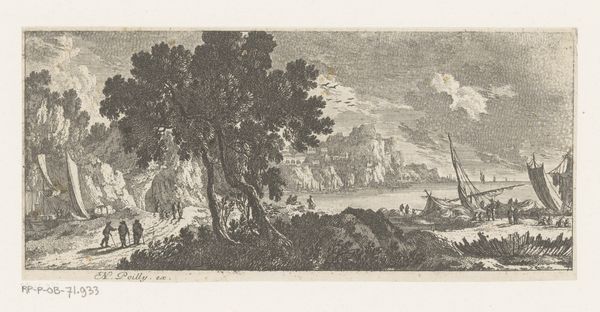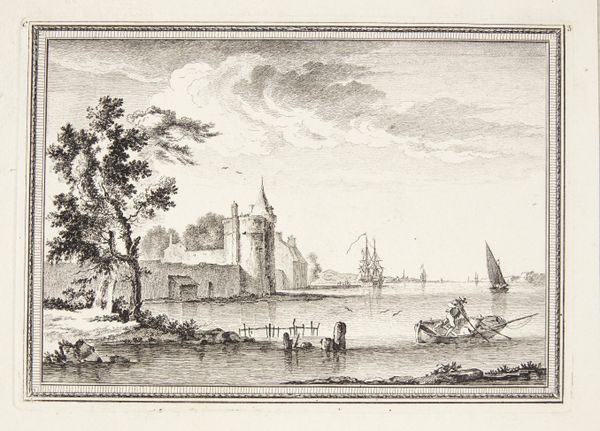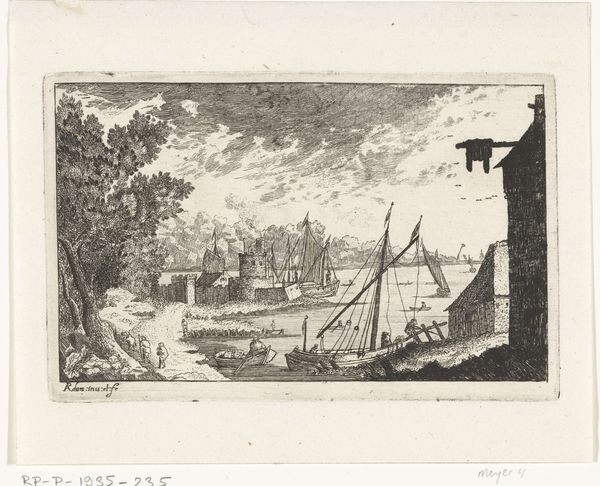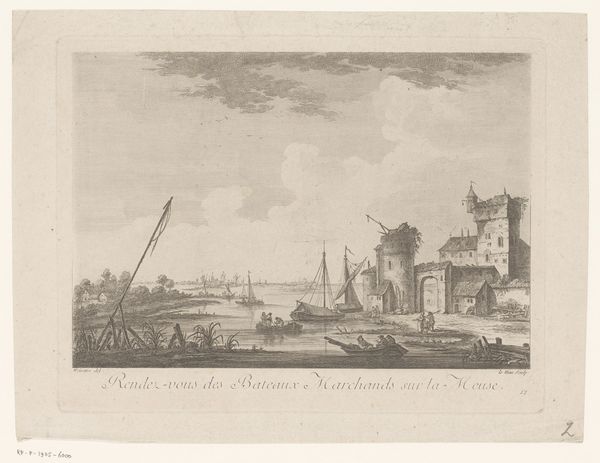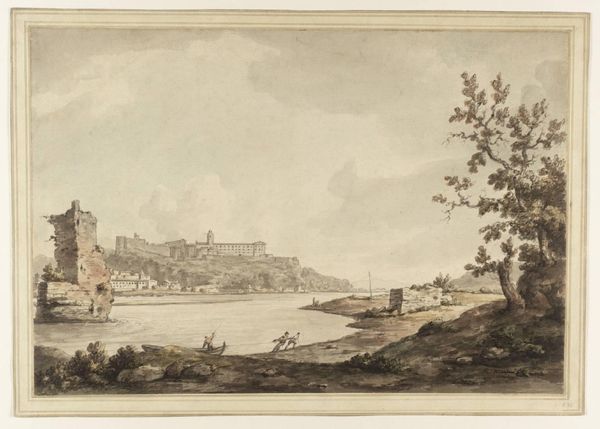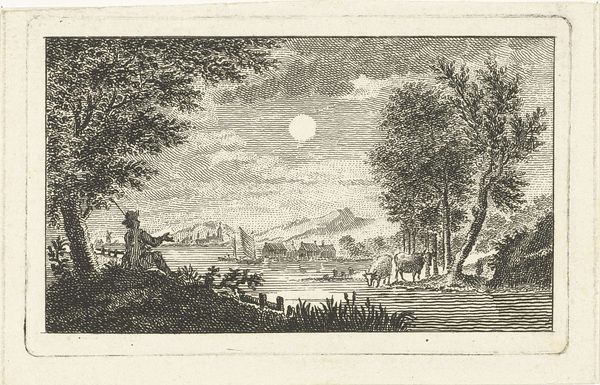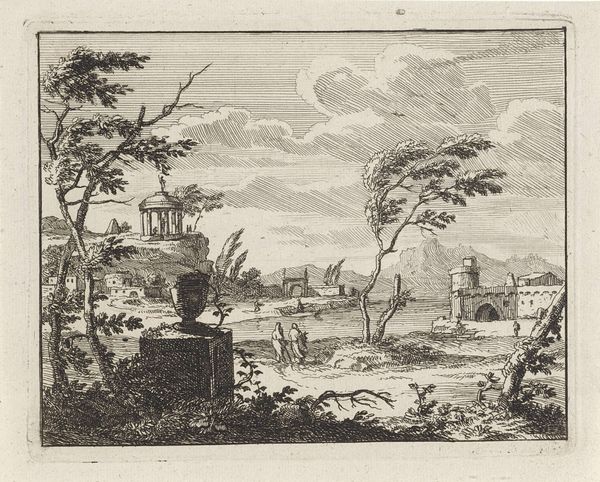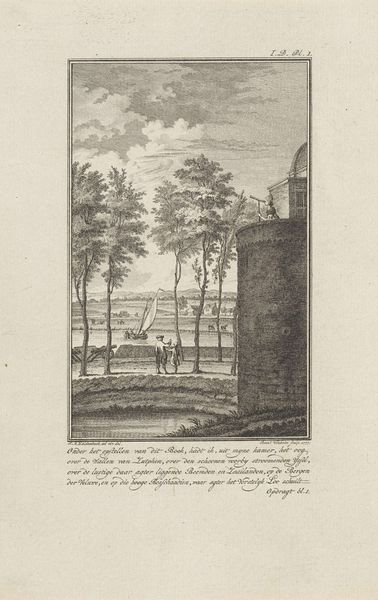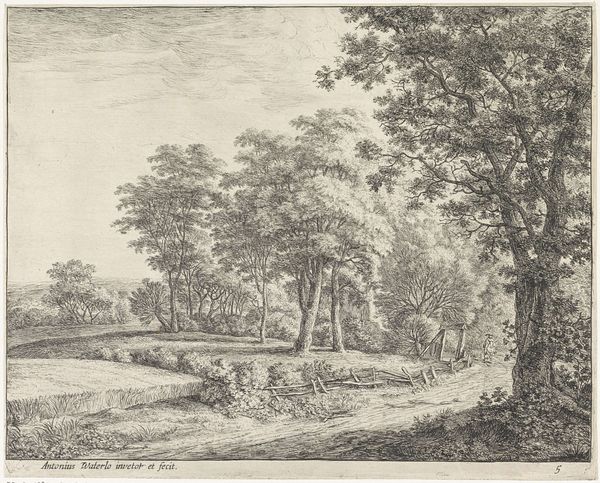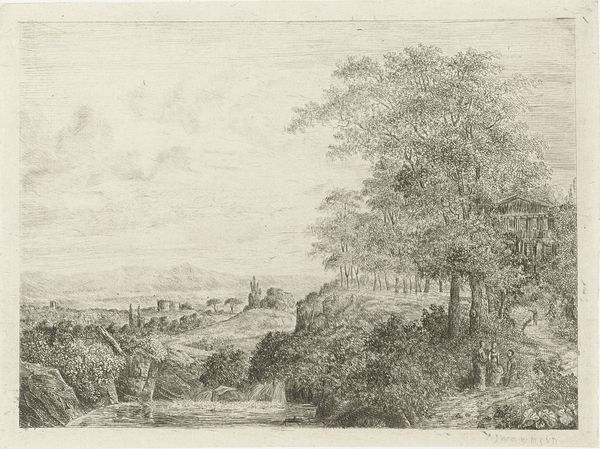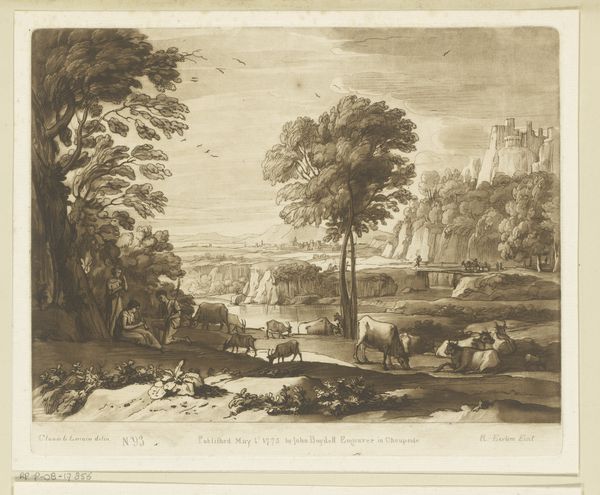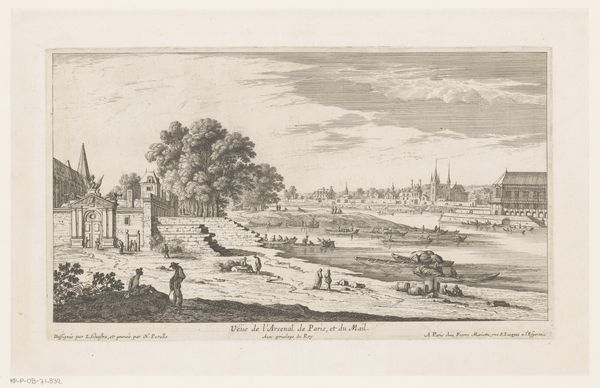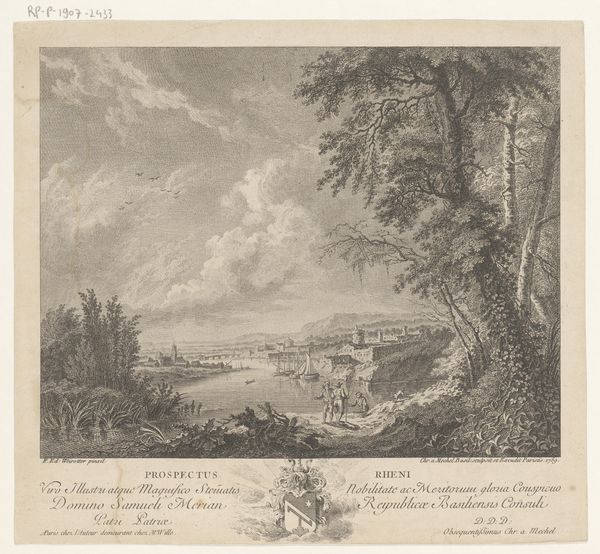
print, engraving
# print
#
old engraving style
#
landscape
#
cityscape
#
engraving
Dimensions: height 205 mm, width 231 mm
Copyright: Rijks Museum: Open Domain
Curator: The engraving "Weids landschap met twee figuren en zeilschepen," created in 1799 by Izaak Jansz. de Wit, presents a serene landscape crafted through the precise medium of engraving. The figures are small in comparison to the landscape they inhabit, it seems… isolated somehow. What visual elements strike you most profoundly within this composition? Editor: I’m fascinated by how the artist used only lines to create depth and texture. The details in the foliage, water, the ship sails - especially for something that looks like it would require great care with pressure. What does the balance between light and dark, achieved solely through line work, suggest to you about its artistic intent? Curator: Note how de Wit masterfully employs hatching and cross-hatching to simulate tonal gradations, thus creating spatial recession and atmospheric perspective. The density of the lines in the foreground accentuates the roughness of the nature there. The controlled variations manipulate our perception of volume and surface texture. Editor: It's almost like a black-and-white photograph, though far less realistic given how blurry photography was in that period. In other words, the tonal contrasts are high. What does that suggest, artistically? Curator: Perhaps the heightened contrasts, achieved without colour, distill the landscape to its most essential forms. In the broader formalist context, consider this work alongside contemporaries: how might its manipulation of line, light, and shadow reflect the stylistic values and aesthetics of its time? Editor: I can appreciate that a little bit more with a frame for that, how the line work and tonal shifts can suggest specific emotional or compositional qualities without being photographically realistic. It's almost like realism can be "too real," and lose some power in what can only be evoked through the artificial. Curator: Indeed. By dissecting the formal elements, we move toward a richer understanding of its artistic intention and aesthetic impact. Editor: Okay. I see what you mean. Thanks for your thoughts on this engraving!
Comments
No comments
Be the first to comment and join the conversation on the ultimate creative platform.
